Technology and healthy soil boost yields at Redbank Farm

Redbank Farm in north-west Tasmania, Australia, has successfully used precision agriculture to make the most of its soil for over five years. “I did not want to get GPS for simply steering in a straight line, there is so much more we can do with technology”, says Farm Manager and part owner Michael Nichols.
Redbank Farm recently won the Australian Landcare award for innovation in agriculture for its use of precision agriculture to improve soil health and crop yields. “It was nice to be acknowledged for our work”, Michael says.
Michael points out that Redbank Farm has predominantly one soil type, red basalt. “It’s a very fertile soil”, he says. “But having one dominant category of soil means that any variability seen on the property is unlikely to be related to specific soil type. A lot of growers use variable rate fertiliser applications solely due to the effects of different soil types on their properties. However, with one predominant soil type I knew that I could rule that out as a variable.”
Grid sampling soil tests
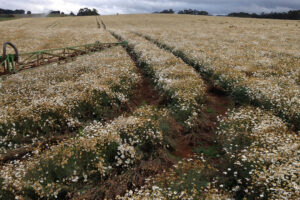
Michael decided to work with grid sampling soil tests. “We do that together with Precision Ag Victoria. We custom made our grids”, he explains. “We take two samples per hectare and go down to 20 centimetres. We are basically testing for pH, Calcium, Magnesium, Potassium and Phosphorous. Once we pinpoint these areas, I can look at the map and determine whether we use lime or dolomite as an improver, or phosphorus and potash.”
The Farm Manager points out that the farm has some steep hills and undulations. “With quite a high rainfall of around 1200 mm of rain per annum we have a lot of nutrients moving into the gullies from the higher areas. Therefore, some of our maps have shown high phosphorus levels in the gullies and low levels on the hills. With a variable rate map, we can spread single super or potash to improve those higher areas and maybe put nothing on the lower areas.”
All our soil tests are done for potatoes because they are our biggest fertiliser user
Redbank Farm is a mixed cropping farm, growing crops on 170 hectares of land. The main crop is potatoes, grown on 28 hectares. But the farm also produces onions, peas, pyrethrum, poppies, wheat, barley, mustard, buckwheat and corn in rotation. “Potatoes are king for us”, Michael says. “All our soil tests are done for potatoes because they are our biggest fertiliser user. And that’s where we can make the biggest difference in bringing the paddocks up to an even yield.” The farm uses a three-point linkage spreader for its variable rate applications.
Less fertiliser costs
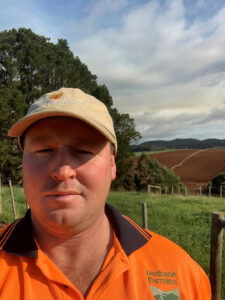
The results of the tests are uploaded in a shapefile. “The soil tests aren’t cheap”, Michael says. “But every time we have done them, we have saved money on the fertilisers we would have put on our pre- spread for potatoes and onions. We are saving around AUS $ 20,000 a year on fertiliser costs. That is quite substantial. And we have also been getting extra yields from our crops. We are now actually the Australian record holder for wheat with a yield of 13.1 ton per hectare. Hopefully we can build on that and give the farmers in New Zealand or the UK a run for their money.”
Redbank Farm uses a Claas combine with yield mapping capabilities. “That made us realise that we had enough variability in our crops to go for a variable rate application”, Michael says. “We actually had a 40% yield variation across our paddock. By using a variable rate application, we were able to bring it back to a 20% variation. We have taken out some of the high points and a lot of low points. Thanks to our yield mapping we had enough historical data about the variation before we started using the variable rate application.”
You never save money on nitrogen
Redbank Farm also uses NDVI images in corporation with Australian company Data Farming. “The biggest restriction is the fact that we have a lot of cloudy days here”, Michael explains. “Sometimes we can’t get that satellite image. But when I do get an image, I can very easily draw up a variable rate map for our nitrogen inputs, using Data Farming. You never save money on nitrogen. We always end up putting the same amount of nitrogen on the paddocks. But we put it on where it needs to go. With higher rates where they need to be applied and lower rates where that is appropriate.”
Michael finds the Data Farming technology quite easy to work with. It proves to be a cost-effective way to get a variable rate map. “You just find your paddocks in their programs and save your NDVI images. You apply for a variable rate map and it then breaks your paddock down into three variable rate areas, for high, medium and low density in your crop. Basically, we put less fertiliser where there is a high density and the higher rate fertiliser where there is a low density. It basically has to do with optimising growth with the least spent on fertiliser.”
Cover crops
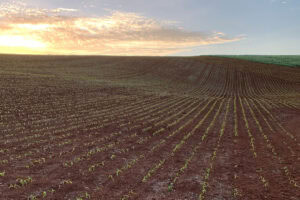
Redbank Farm also uses a lot of cover crops. “After we harvest our crops in late summer, autumn and winter, rather than leaving our paddocks fallow during the winter period, we put in cover crops to catch all the nutrients that would otherwise wash through the soil profile. Cover crops also stop soil erosion. We recently tried using mixed cover crops with mixed species in one planting, for example mustard, peas, barley and buckwheat. With these mixed crops we try to improve the biodiversity of our soil. All these plants offer something slightly different. Peas offer some nitrogen fixing, buckwheat can unlock some phosphorus in the soil, the mustard we plant is a sort of soil renovator and the barley helps to give it some quick ground cover.”
Soil carbon content
Redbank Farm has managed to improve its soil carbon content considerably in the past few years. Michael: “Our organic matter now sits around 4% to 5%. And our total carbon sits around 9% to 12%. These are high numbers. We’ve been reaching these higher percentages since we have been using the cover crops. We are retaining the nutrients but we are also working these crops into the ground before we plant our next crop. This increases the holding capacity of the soil because it can hold more moisture.”
Michael’s parents were also nominated for an award in 2004. They won the national primary producer award for Landcare. “That was for combining biodiversity conservation with productive farming”, he says. The farm uses a wind turbine that can produce up to 220-kilowatt power per hour. Redbank Farm also produces 80,000-day old chicks per week to supply a Tasmanian based broiler chicken business. “The upside of this is that I get the chicken manure which has helped enrich the soil with nutrients and has boosted the all-essential organic matter”, Michael emphasises.
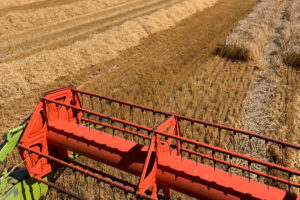
According to Landcare Tasmania nearly all creeks and waterways on the property have been fenced and revegetated with local species. Shelterbelts provide cover for stock and crops. About 100 hectares of native bushland, containing some old hollow trees, exists on the farm. This means the property is rich in Tasmanian wildlife. This includes wedge tailed eagles, giant fresh water lobsters, rosellas, Tasmanian devils and numerous other species.
We want to be a sustainable farm instead of pillaging our land
“We have some cattle but we keep them out of bushland”, Michael points out. “We try to work with nature but also be profitable. We want to be a sustainable farm instead of pillaging our land.”
Michael expects to refine its use of precision agriculture in the coming years. “As equipment becomes more cost effective, we will invest in a better spreader. With that we will get a more precise application of fertiliser. We will also will be looking at a spray rig, using streaming nozzles, and maybe applying some fertiliser through the boom rather than using granules. We might even explore carbon storage in the future…”
Get the basics right
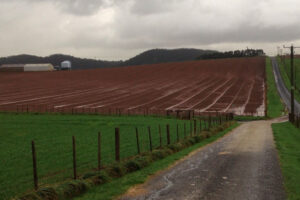
Using precision agriculture technology has been well worth it, Michael says. “But you got to have the basics right first and then add the GPS to get the 5% to 10% gain. And you have to be a reasonably proactive farmer. So many people are looking for a silver bullet. We were also very timely with everything else we did. It was the logical next step in our farming journey.”



